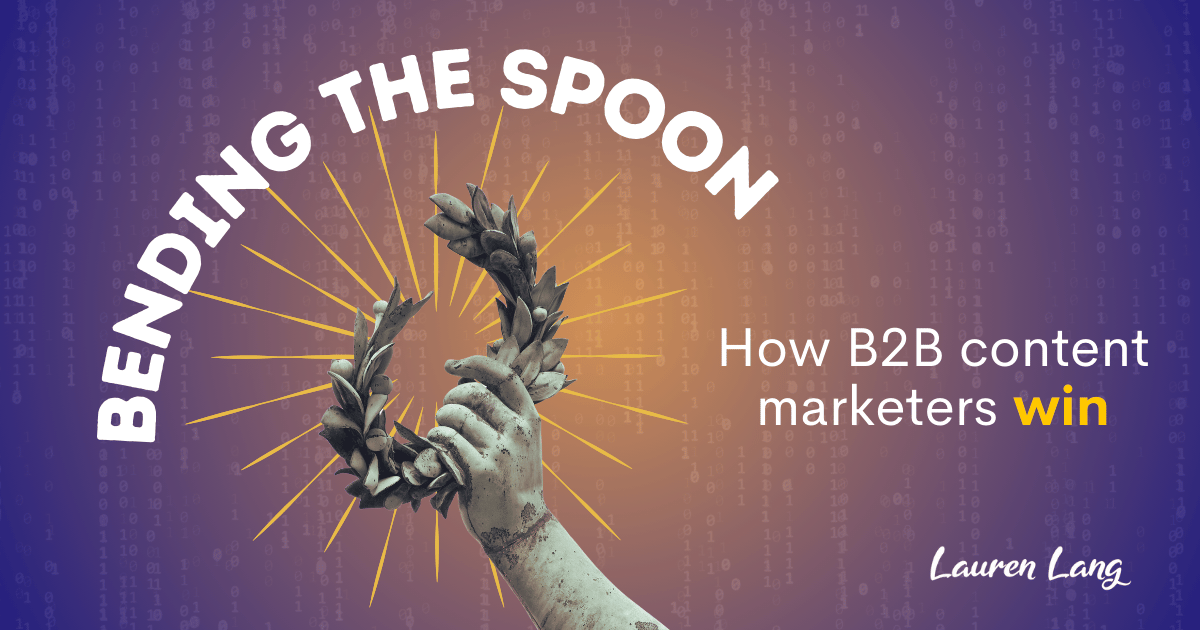Last week I found myself in a strange position: sitting in a competitor's strategy meeting.
(Not literally, of course. I don’t work for Deel now or anything. 🤣)
But I might as well have been there, because after spending a few hours analyzing their content, I knew:
Which market segments they're prioritizing
The product roadmap items they're starting to tease
Which competitor narratives they're worried about
Where they believe the industry is headed
This is one of those million-dollar opportunities to be strategic if you can carve out the time to do it.
We’re often too focused on producing our own content and assuming that competitive strategy is the purview of product marketing or sales... or we make it shallow at best, e.g. "they rank for keywords we don't."
But the real insights that can boost your competitive advantage, as well as your personal clout in your organization, require going much deeper. Let's talk about how to do that.
💪 Actionable tip: do a competitive content audit
Competitor content analysis is more than just a surface-level checklist. Instead, approach it like an intelligence operation with specific questions you're trying to answer.
Here's how to conduct a strategic content audit that reveals what your competitors are really thinking:
Step 1: Map recent content to business priorities
First, gather your competitor's content from the last 3-6 months. You're looking for blog posts, white papers, webinars, product pages, documentation, press releases, executive LinkedIn content, the whole shebang.
Now categorize this content not by format, but by the business objective it appears to serve:
New market penetration
Product launches or enhancements
Competitive positioning
Thought leadership/category creation
Customer retention/expansion
Especially if you go beyond simple TOFU topics, you'll start seeing patterns immediately. Maybe 60% of their content suddenly focuses on enterprise use cases when they previously targeted mid-market. That's a clear signal of where they're heading.
Step 2: Follow the frequency
What topics do they cover repeatedly? What do they mention only once and never again? Frequency signals priority and can help indicate whether their content strategy behind a certain piece was a “throw it at the wall and see if it sticks” experiment or something more thought out and strategic.
If a company publishes seven pieces about a specific integration over three months across a bunch of channels, for example, that clearly telegraphs a partnership strategy you might not notice otherwise.
Step 3: Track tone shifts
Changes in language can reveal strategic pivots before they're officially announced. Look for:
Shifts from technical to business language (often signals moving upmarket)
Introduction of new industry terms (positioning for category ownership)
Sudden emphasis on security or compliance (targeting regulated industries)
Changes in how they describe competitors (defensive positioning)
Step 4: Analyze the negative space
Sometimes what's missing is as revealing as what's present. If a competitor has historically published monthly about a particular feature but suddenly goes silent, it could signal they're deprioritizing that offering – or preparing a major overhaul they're not ready to reveal.
Step 5: Connect the dots with broader business moves
Content doesn't exist in isolation. Correlate content patterns with:
Recent funding rounds
Executive hires
Acquisitions
Earnings reports
Document these insights in a quarterly competitive intelligence report. You'll be surprised how valuable it becomes to product, sales, and executive teams – elevating your role far beyond "the content person."
🚫 Antipattern: “me-too” content
Here's the scene I've witnessed (and, tbh, spearheaded) too many times: Someone frantically shares a competitor's new ebook, saying "We need something exactly like this ASAP!"
It's the content marketing equivalent of seeing your neighbor buy a fancy new grill and immediately ordering the same one without considering whether you even want hamburgers.
That‘s a race to the bottom I’ve eventually learned not to take.
This mimicry is incredibly dangerous because:
You're fighting yesterday's battle. By the time you've created your copycat content, your competitor has moved on to their next strategic initiative. MAYBE this is less of a threat with AI, but creating reactive content super fast tells your leadership you can do it all the time and thus positions you for order-taking. Let’s not feed that narrative.
You miss the "why" behind their content. You have no way to know if that impressive industry report was created because they're struggling in that segment and need to establish credibility – and not because it's working well for them.
You confuse your audience with mixed messages. Suddenly pivoting to match a competitor's approach creates inconsistency that erodes trust with your audience.
You play by their rules, not yours. Each organization has different strengths. When you blindly copy competitors, you're letting them write the broader narrative about what matters. Don’t do that.
Always place competitor content in the context of their broader strategy first — which, of course, requires Steps 1-5 above to be aware of what that strategy even is.
I also love playing the underdog card. There are two big companies in our industry right now that are trading blows back and forth, which opens up doors for us to approach the problem in a different way — from a product standpoint AND from a messaging one. We’ll let them fight over the scraps of the same way it’s always been done.
Wisdom is understanding where to do the same thing and where to diverge.
Need help communicating content’s value to executives? Bending the Spoon teaches content marketers to think like leaders by proving the value of their work. I’ll show you how to use data to correlate content to pipeline, how to communicate successfully with executives, and how to build cross-functional relationships that make you an MVP in your organization.
💡 Big idea: content is your competitors’ strategy memo to you
While content is marketing output, sure, it’s also the physical manifestation of strategic priorities hiding in plain sight. When a company decides to invest time and money creating specific content, they're telling you exactly what matters.
If nothing is to be taken at face value in this thought experiment — if blog posts are breadcrumbs and white papers are basically intelligence briefings generously provided by your competition — how would this change YOUR strategy?
Because the way I see it, making this shift gives you three powerful competitive advantages:
Anticipatory positioning. When you can see where competitors are heading, you can position your offerings ahead of their moves, not in reaction to them.
Gap exploitation. Strategic content analysis often reveals blindspots in competitor approaches – opportunities they're missing that you can exploit.
Differentiation clarity. Understanding competitor strategy makes your differentiation choices clearer and more deliberate.
The content marketers who master this skill become indispensable strategic assets to their organizations. You're providing competitive intelligence that, once again, shapes product development, sales enablement, and executive decision-making — and that’s where the value is.
These insights are potentially an avenue into the seat at the table that could otherwise be closed to you.
When you can walk into a meeting and say “Based on their content patterns, I believe Competitor X is planning to launch a solution for the healthcare vertical in Q3,” that’s a different conversation — and you have the potential to be seen very differently in it.
The best part, of course, is that unlike other forms of competitive intelligence (still looking at you, Deel), content analysis doesn't require special access or questionable tactics. It's all publicly available. The insights are there for anyone with the expertise to interpret them — and the chutzpah to give a damn.
Why not you?
Yours in contention,
Lauren









